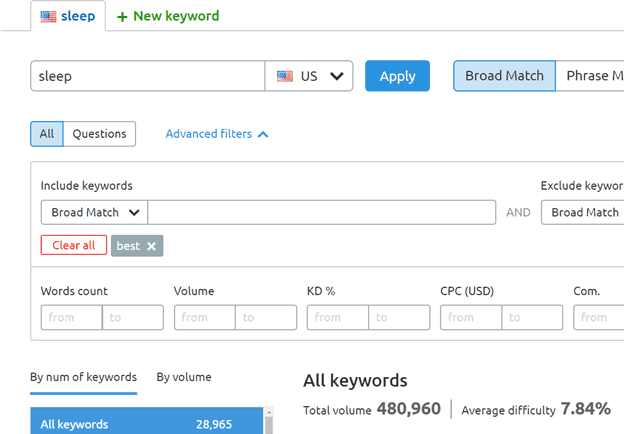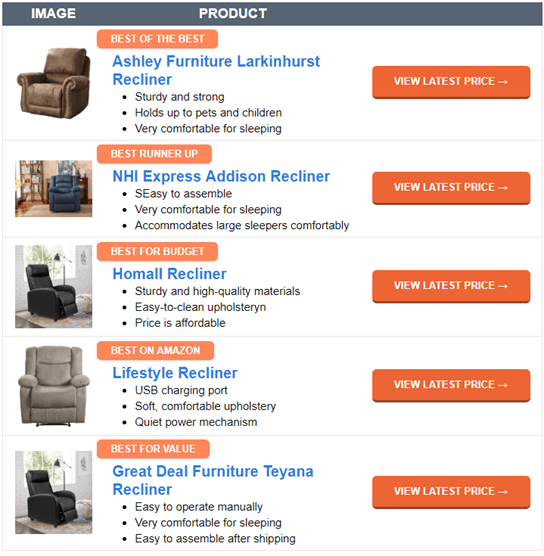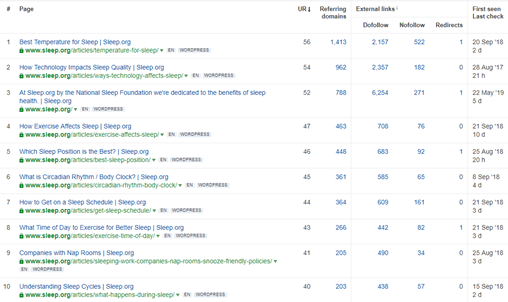Passive income has long been the holy grail for entrepreneurs.
And one of the most popular ways to generate passive income is through building a website centered on affiliate marketing.
Just the other day I scrolled past an ad on my Facebook feed promising to help budding entrepreneurs make money online, and decided that it was my turn to share some of the knowledge I’ve gained over the last three years of building websites that generate income.

Here are the key stats:
- Soft launch Feb 2018 – Created 10 articles
- Formal launch April 2018 – Started creating around 10-15 articles per month
- May 2018 – First sale, the site generated $3.45. Hooray!
Here’s the revenue breakdown of the following months:
| Months | Page Views | Revenue |
| Jun | 1,661 | $36.67 |
| July | 1,108 | $92.86 |
| Aug | 3,962 | $512.95 |
| Sep | 9,555 | $1,512.62 |
| Oct | 14,536 | $2,407.86 |
| Nov | 17,360 | $3,359.29 |
| Dec | 16,523 | $3,910.15 |
And here’s my promise:
In this article, I’ll share my step by step process to building a cash flow positive affiliate websites that generate passive income revenue.
I’m not holding any secrets back, instead, I’m going to take you right into the lion’s den.
I’ve used this process over the last few years to build multiple successful websites that generate traffic with SEO (Search Engine Optimization).
And if you’ve ever considered making a website to generate passive income, I hope you’ll be able to use my insights to build a website that will generate revenue for you in the long run.
In this case study, I’ll be lifting the hood on one of the sites we’ve built in early 2018: Sleeping Culture.
So, without further ado, let’s jump straight in.
Step 1: Find A Profitable Affiliate Niche
Niche selection is key, as competition in the affiliate SEO space is constantly increasing.
In the last few years, even the big publishers such as The New York Times (Bought The Wirecutter), Business Insider and Entrepreneur have decided to enter the affiliate marketing space.
Here’s what you should look for when choosing your niche:
It Should Be Specific But Expandable
Health & Fitness is not a niche, it’s a huge industry. Sleep, on the other hand, is a niche because it focuses on a more specific set of needs and problems.
A profitable niche focused on a narrow topic so that you can build your influence in it with high quality content.
It limits the scope of your work and helps you come up with achievable targets.
However, it shouldn’t be so narrow that there’s no roo for growth. Ideally, you should choose a niche in which you can grow your influence and then branch out into other related niches with time.
It Should Be Profitable
There’s no point in choosing a niche where there’s no commercial activity. You need to choose a topic/industry where people regularly buy and sell products & services.
You plan to make money by referring customers to Amazon and other affiliate networks which is why you need to check whether the top affiliate sites have products related to your niche and whether people are regularly buying them or not.
Plus, you need to check the commission rates and the product prices to determine how much you can earn per sale.
Only enter a niche if it makes financial sense.
It Should Focus On Problems And Passions
Don’t choose a niche based on a product. Choose a niche where people have problems they want to solve or passions they want to pursue.
For example, mattress is not a niche, it’s a product.
Sleep disorders, on the other hand, is a niche because it represents a wide range of problems.
Mattresses are just one of the products you can promote in the Sleep Disorders niche along with dozens of others.
When you focus on problems/passions, your site always remains relevant as compared to when you create a whole site about a specific product.
It Should Be Evergreen
A profitable niche is evergreen which means there’s commercial activity in it throughout the year for several years, not just a few days of the month.
For example, a site about Valentine’s Day is relevant for just a few days every year. A site about romance and relationships on the other hand is always relevant.
Practical Steps To Evaluate A Niche
Look at the overall Search Volume of the keywords, and those with “buying intent”, or what we call “Money Keywords”.
I like to look at a combination of words like “Best ” or “Review” along with my main topic (in this case sleep).
For this part, I use a Semrush tool called Keyword magic tool. There are other keyword tools you can use like Google Keyword Planner, LongTailPro and more.
Let’s look at why we choose the Sleep as our niche:

Based on my experience, I use 50,000 monthly search volume is a benchmark for a new niche.
The next thing to do is look at Google Trends to see if this is a niche with growing visibility in the online space. Let’s look at a few relevant phrases:
“Best Mattress”

“Best Pillow”

As you can see, there is a growing demand online for sleep-related products.
Now a quick look at monetization; most of the sleep products on Amazon belong to the “Home” category on Amazon.com which means an 8% commission rate which is one of the highest rates available on Amazon.

There are a few other things to see as well like the number of traffic sources you can utilize in the niche or the monetization options that are used in this niche.
You can get an idea of both traffic and monetization sources by analyzing the most successful sites in your niche.
I personally like to go in a niche where I can strt off with Amazon Affiliate marketing, then add digital affiliate products from ClickBank and CJ, and then eventually move towards launching my own product.
But that’s not necessary for building a niche site, it’s only the way I like to do it.
Step 2: Perform Keyword Research To Build A Content Strategy
Remember Semrush’s keyword magic tool?
Let’s take a deeper look at how to use these insights to build a winning content strategy. Let’s go back and take a closer look at the search results we got by including the words “Sleep” and “Best”.
I like to view all the categories on the left-hand side.

This is extremely helpful when building your site architecture and content categories.
However, this is still a time-consuming process and takes time and experience to do right.
There’s also a massive amount of information you have to process, so to help with that you can exclude keywords that you find as less relevant to the kind of content you would write.
In this case, I’ve excluded words like “time”, “app”, “way” and more.
Step 3: Developing A Content Strategy For Your Affiliate Site
After identifying your main group of keywords and their search intent you can start to build to content categories. Again, it’s a complex process and there is no one size fits all here.
I’ve chosen to break down the content to three large groups:
- Sleep products – Mattress, pillows, blankets, sleep trackers and sleep aid products
- Sleep disorders – Informational articles on different sleep disorders
- Miscellaneous – Other general articles like “Best music for sleep” “Or best sleep podcast”
After you’ve done this, I recommend creating a spreadsheet with a list of topics per category which you can use to track the progression of your content plan.
Adopt The Funnel Approach To Content Marketing
I strongly recommend adopting a funnel approach to content marketing. What most affiliate marketers do these days is to focus on product reviews and sales content only.
This limits your site’s growth potential plus it never establishes you as an authority in your niche.
The funnel approach works differently and pulls in different types of visitors to your site.
There are three main stages of the content marketing funnel.
- ToFU – Top Of The Funnel
- MoFU – Middle Of The Funnel
- BoFU – Bottom Of The Funnel
Top Of The Funnel (ToFU) content focuses on the needs and problems of your audience without directly selling any products to them.
For a site in the sleep niche, it would mean topics like benefits of a good night’s sleep, how sleep impacts productivity, problems people face in sleep and how to get rid of them, how to put your kids to sleep quickly etc.
Here’s a really good example.

The article doesn’t directly sell anything. Instead, it addresses a popular point that many people are searching these days because of COVID19.
All of these are informational content ideas that don’t directly sell anything. But they do link to your sales content which I’ll explain in a moment.
MoFU and BoFU content is about selling your product by publishing product comparisons, “Best of” articles, product reviews, etc.
The content in these articles focuses on commercial keywords with a high purchase intent.
How do the different stages connect with each other?
ToFU content attracts visitors to your site by focusing on high traffic informational keywords. These visitors don’t even know your brand and have no intention to buy yet. But they do have a sleep related problem.
When they reach your site and read your informational content, in which you pitch your products indirectly as a solution to their problems, they go on to explore your MoFU and BoFU content.
And this is where the sale comes from.
Of course, there will be other visitors who reach your site directly by search for “Best Of” and other commercial keywords and directly buy.
Adding the ToFU layer to your content just makes it more useful and gives you an opportunity to grow your affiliate site into a proper online business.
For example, you could add a lead magnet to the mix here and start converting the traffic coming to your ToFU content into emil subscribers.
From there, the possibilities are endless.
In addition to promoting Amazon Affiliate products on your blog, you can promote other sleep related products through email marketing.
Or you could launch your own product or course that people can pay for.
It just makes a lot more sense to build a comprehensive content strategy instead of focusing on sales content only as most newbies do.
Step 4: Find Content Writers For Your Niche Site
This might be the most important aspect that tends to be overlooked by most SEOs.
Your product is your content; the better the product, the more traffic you’ll have and the better you are going to be able to convert your readers into buying the product which you are recommending them to purchase.
Let me say that again: YOU ARE ONLY AS GOOD AS YOUR CONTENT.
If you’re on a tight budget or like to create content yourself, make sure you go into a niche that aligns with your interests and hobbies. You need to have at least the basic knowledge of a niche if you want to create content that’s better than your competitors.
And trust me, you’ll need to create a LOT of content in your first yeast to get your site dominating the SERPs for your target keywords.
However, if you have the money to invest in content, do it.
Because it then opens up niches for you that you don’t know anything about. All you need to do is to find the right keywords, come up with article topics, and hand it over to your niche specialist writers.
Secondly, it allows you to speed up content production and grow your site much faster.
With that in mind, it’s time to find the best content writers for your niche.
Here’s how I do it:
Direct outreach
Google the search results relevant to your niche, in this case, sleep-related search.
See if you can find freelancers/ professional writers that already have authority and are ranking well for the type of topics you would like to rank for.
See if they have their own sites or LinkedIn profile where you can contact them directly and offer them a writing job.
Upwork
Upwork is one of the leading platforms online for finding the talent you can work with, from Web developers to Marketing specialists and in this case content writers.
The only to downside to Upwork, based on my experience, is that most of the content writers we found were looking for part-time income and could only write around one article per week.
This means that if you’re planning to build a content-heavy website, (100 plus articles in this case), you would have to hire multiple content writers and keep track of them as their availability tends to change from week to week.
Problogger Jobs
Problogger is a high end content marketing job board where you can find some really good writers.
If you have the budget, you can actually find some o the best niche writers here.
But it’s a paid job board and you’ll need to pay $50 to get you ad up.
If you take this route, make sure your project brief is very clear and mentions that you need people for a specific niche with very specific work experience.
Although the writers on Problogger Job Board can be on the expensive side, you can get some pretty attractive discounts if you order in bulk (which we’d want to do anyway).
Niche Specific Forums
Here’s a useful tip based on my experience.
Find relevant discussion threads on Quora or Reddit, or head over to a niche specific forum and browse through some of their most popular threads on your niche topic.
On every forum, you’ll find a few people who’re really knowledgeable about a niche and actively contribute to all the discussion threads about it.
They can be your potential writers if you reach out to them.
Some of them may not have paid writing experience (which is good writing guidelines since you can get them for a low price) but as long as they’re knowledgeable about the niche, you shouldn’t worry because blog content doesn’t need to be overly formal or in a specific format.
Plus you’ll be giving them all the writing guidelines so it should work out well.
*Pro Tip: Hire writers that are native speakers to the Geo you are targeting. If you’re targeting the US market hire American writers. If you are targeting the UK or Australian market, hire content writers native to those regions.
Step 5: Chalk Out Clear Writing Guidelines For Your Writers
Here’s another pro-tip: the more concise your guidelines and instructions are for your writers, the more efficient they are going to in terms of delivery and overall quality of the articles they submit.
Here’s a content guidelines example:
Hi, [Name]
1)Topic: [Name of Topic]
Main keyword – [Name of Topic]
Secondary keywords –
- [Secondary keyword #1]
- [Secondary keyword #2]
- [Secondary keyword #3]
Please see the following guidelines for this project.
The article should consist of 1200-1500 words.
The content will be published on this site: sleepingculture.com
Here are some good format examples:
- [URL #1]
- [URL #2]
- [URL #3]
Please structure the article:
- Intro paragraph
- Key considerations
- A product description for products including pros and cons
- Considerations when buying a [Name of Product]
- Features like warranty, durability etc…
- Closing overview
Additional requirements:
- Use questions in the subheadings.
- Use the secondary kws as subheadings as well.
- Use bullet points in the “answers”
*Please add sources at the end of the article.
How to pick the top products:
Look for the product on amazon and pick the products according to overall best rating and items that have the highest amount of reviews. Include products with Amazon badges like “best seller” or “Amazon Choice.
The content should be backed up by research and Amazon reviews of people who have already bought the products.
*You should read the reviews to make the selection as to the top mattresses.
The basic structure therefore that we use for a review article is:
Short intro: Keep it short and sweet, remember readers have zero patience. Most of then want to jump right into the product comparison part as soon as possible.
Quick look section: Here’s the product comparison I was talking about, a chance for readers to get a quick summary of the product they’re looking for.

(Credit- Shout out for the guys from Convertica for the table design.)
Key Considerations Section: Here’s where you explain to your readers why you chose this product and what they should be looking for in order to find the right product for them.
Mini-Review Section: In this section, you breakdown the pros and cons of each product. Make sure you have a detailed product description that helps your readers figure out if this is the right product for them
Additional considerations: A chance to dive deeper into the topic talk about other issues your readers might be interested in.
Step 6: Build Backlinks To Your Niche Site With Email Outreach
Google has been downplaying the importance of high quality link, but make no mistake, links are still very much a key factor Google’s algorithm takes into consideration as part of your site’s authority on the web.
So, the more quality links you have from trusted sites (like HARO links), the more authority your site has in Google’s eyes, and so the better it is going to rank for your money keywords
If you need more help figuring out exactly what might qualify as a good link, I strongly recommend reading this article published on Moz.com.
Steps for a successful outreach campaign:
- Identify the type of content that is most often linked to by other websites
Here’s how I like to do it, I use Ahrefs (The leading tool for backlink research in my opinion).
This time I’m looking to see which content get the biggest amount of links at one the most trusted sleep sites online sleep.org. Than under Pages => ”Best by Links”.


As you can see there are a lot of great ideas here to create new content around.
Here are the next action items you need:
- Make a list of relevant websites you would like to contact
- Make a list of topics that you could suggest to these sites as a guest post
- Make a list of resources on your sites that you can offer to other sites as a useful resource
- Cross-reference guest posts and resource suggestions so they don’t overlap
- Create an email template
Here’s the outreach template we used:
Hi [insert name],
Hope you’re well.
I wanted to get in touch as we’re a big fan of your site at [Your site name] and we were wondering if there’s a chance we could work together.
We’ve just spent the last few weeks putting together an in-depth resource on sleep disorders. You can find it here: [insert URL]
Would you be able to include a link/reference to the guide on your site in a relevant article?
Alternatively, if you’d prefer a high-quality guest post, let me know! We have a team of sleep experts who can write to your requirements. Here’s a couple of our recent guest posts as examples:
[Example 1]
[Example 2]
Thanks, and hopefully speak soon.
[Your name]
Are You Ready To Start Your Successful Affiliate Site?
Congratulations if you’ve made it this far!
The title of the article is “From $0 to $4,000 in less than 10 months” but to be honest, not all of the sites we have built have hit the $4,000 mark – yet.
The thing with SEO is that it requires a lot of time and patience. Some sites only reach their full potential after two years or more. Some of the sites we’ve built did not succeed and some were a complete failure.
But if you follow the process detailed here, and if you think about your content as your product, I think you’re likely to succeed.
[ad_2]
